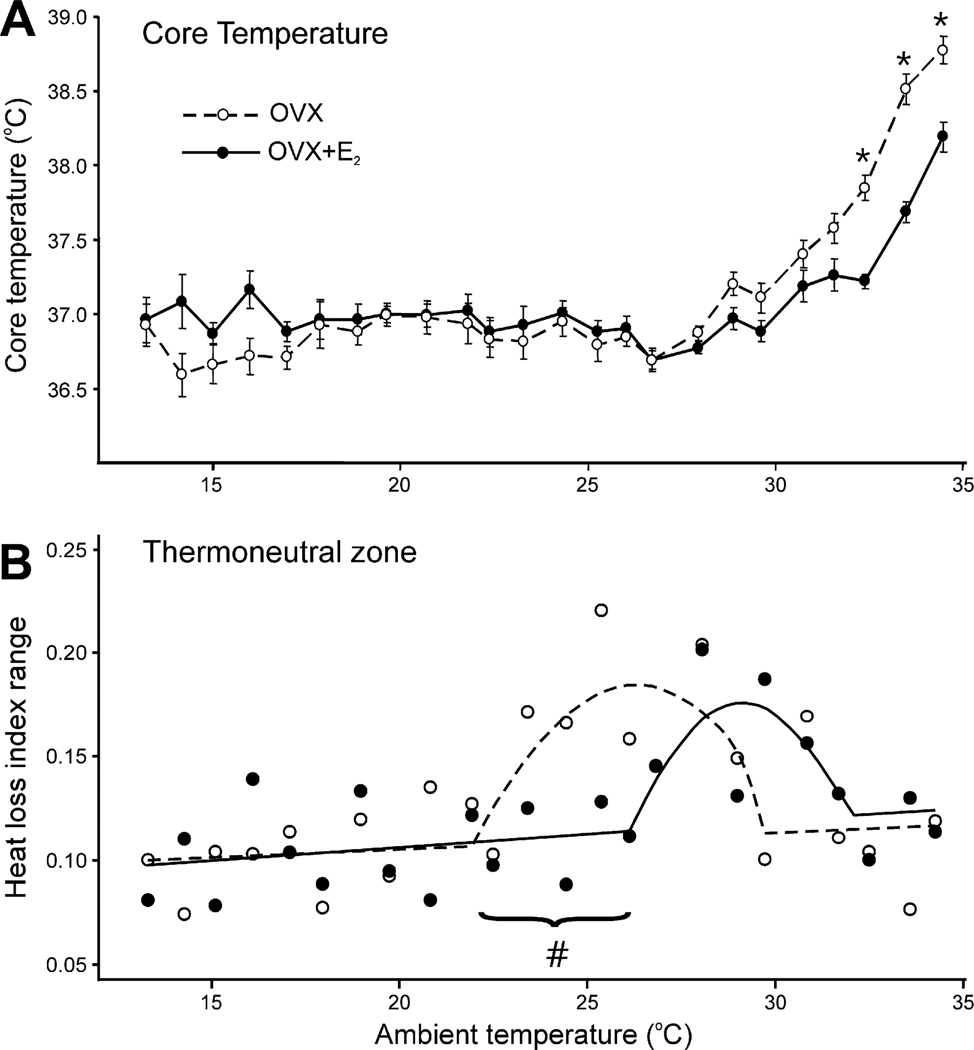Fig. 8.
(A) Average (±SEM) core temperature of ovariectomized (OVX) and OVX + estradiol−17β (OVX + E2) rats at ambient temperatures from 13 °C to 34 °C (n = 11–12 rats/group). At most ambient temperatures, estradiol has no effect on core temperature. However, at ambient temperatures above 32.5 °C, the core temperature of OVX rats is significantly higher than OVX + E2 rats. These data show that estradiol-17β treatment of OVX rats improves core temperature regulation during heat exposure. (B) Heat loss index (HLI) range of OVX and OVX + E2 rats at ambient temperatures from 13 °C to 34 °C. HLI is a measure of tail skin vasomotion.An increase in HLI range indicates increased fluctuations in tail skin vasomotion, a characteristic finding within the thermoneutral zone (see Fig. 6 and Romanovsky et al., 2002). The straight line and parabola were fitted to these points using breakpoint analysis. The range of the parabola approximates the thermoneutral zone. These data show a shift in thermoneutral zone to lower ambient temperatures in OVX rats compared to OVX + E2 rats. The circles represent median values of 11–12 rats/group. * Significantly different OVX vs OVX + E2#Non-overlapping 95% confidence intervals comparing the first breakpoint for OVX vs. OVX + E2 rats. Adapted with permission from Dacks and Rance (2010).

